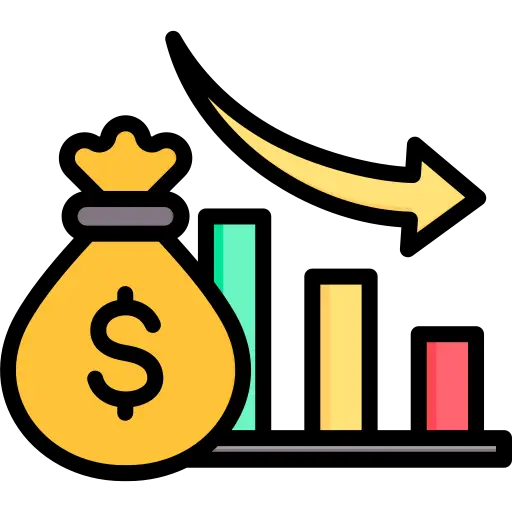Verified Insights
Precision-driven research you can trust. We uphold rigorous data validation processes to ensure every report is reliable and based on credible sources.
+91 9425150513 (Asia) support@24lifesciences.com
MARKET INSIGHTS
The global hydrogen peroxide vapor (HPV) decontamination system market was valued at USD 686 million in 2024 and is projected to reach USD 937 million by 2031, exhibiting a CAGR of 4.8% during the forecast period.
Hydrogen peroxide vapor (HPV) decontamination systems utilize vaporized hydrogen peroxide, a broad-spectrum antimicrobial agent with virucidal, bactericidal, fungicidal, and sporicidal activity. This technology offers a relatively rapid sterilization method, operating as a 'dry' process where the concentration is maintained below the condensation point specific to the treated area's temperature. A key advantage over other gaseous technologies is its decomposition into water and oxygen, leaving no toxic residues. This residue-free nature, combined with high efficacy against multi-drug resistant organisms, positions HPV systems as critical tools in infection control protocols across healthcare, pharmaceutical manufacturing, and food processing facilities, among others.
The market growth is primarily driven by increasing regulatory stringency regarding sterilization standards, particularly in healthcare settings where hospital-acquired infections (HAIs) remain a significant concern. The U.S. Centers for Disease Control and Prevention (CDC) estimates healthcare-associated infections affect approximately 1 in 31 hospital patients daily. Concurrently, the COVID-19 pandemic has accelerated adoption of advanced disinfection technologies across all sectors. However, market growth faces constraints from the high initial investment required for HPV systems and the need for specialized operator training, particularly in resource-limited settings.
Geographically, Asia Pacific represents the largest market with approximately 39% share, followed by North America (30%) and Europe (21%). This distribution reflects both the concentration of manufacturing activities and the increasing healthcare expenditure in emerging economies, particularly China and India. The European market benefits from stringent EU regulations on medical device sterilization (EN ISO 13485) and food safety (EC No. 852/2004), while North America maintains strong growth due to FDA enforcement and high healthcare standards.
Looking forward, technological advancements are focusing on reducing cycle times while maintaining efficacy, integrating IoT capabilities for remote monitoring, and developing more compact systems for smaller facilities. The market also shows increasing convergence with ultraviolet-C (UVC) disinfection systems as part of multi-barrier infection control approaches.
Superior Decontamination Efficacy
The healthcare industry's increasing focus on infection control has driven demand for HPV decontamination systems, as they demonstrate 99.999% efficacy against a broad spectrum of pathogens including multi-drug resistant organisms. This effectiveness in eliminating healthcare-associated infections (HAIs) positions HPV systems as critical infrastructure in modern medical facilities.
Regulatory Compliance Requirements
Stringent regulations from agencies like FDA, EMA, and other global health authorities mandate rigorous sterilization protocols. HPV systems help facilities meet these requirements cost-effectively, particularly in pharmaceutical manufacturing and critical care units where contamination control is non-negotiable.
➤ The global HPV decontamination market is projected to reach $1.2 billion by 2027, growing at 12.3% CAGR, driven by increasing surgical volumes and heightened infection control awareness.
Rising number of surgical procedures worldwide, particularly in emerging economies, creates sustained demand for effective sterilization technologies. The COVID-19 pandemic further accelerated adoption as healthcare facilities intensified their infection control measures.
MARKET CHALLENGES
High Initial Investment Costs
HPV decontamination systems require significant capital investment, with advanced systems costing between $25,000 to $85,000 depending on capacity and features. This creates barriers for smaller healthcare facilities and laboratories with limited capital expenditure budgets.
Other Challenges
Technical Complexity and Training Requirements
Operators require specialized training to safely handle concentrated hydrogen peroxide and operate the equipment effectively. The learning curve and need for periodic re-training add operational costs estimated at 15-20% of the initial investment over five years.
Alternative Technologies Competition
Ultraviolet (UV) light systems and traditional chemical disinfection methods continue to capture market share, particularly in price-sensitive segments. UV systems have achieved 40% cost reduction over the past three years, making them attractive for budget-constrained facilities despite lower efficacy rates compared to HPV systems.
Emerging Markets Expansion
Developing regions with growing healthcare infrastructure present substantial growth opportunities. Countries across Asia, Latin America, and Africa are increasing healthcare spending and implementing stricter infection control regulations. The Asia-Pacific market alone is expected to grow at 14.2% CAGR through 2028, driven by India's and China's healthcare modernization initiatives.
Technological Innovation and Automation
Integration of IoT and AI for predictive maintenance and optimized cycle times represents the next growth frontier. Smart systems that automatically adjust parameters based on room size and contamination levels can achieve 30-40% reduction in operational costs while improving safety through reduced human intervention.
Multi-Sector Applications Expansion
Beyond healthcare, applications in food processing, pharmaceutical manufacturing, and even electronics manufacturing offer substantial growth potential. The food industry alone represents a potential $450 million market as producers implement stricter pathogen control following recent contamination incidents.
| Segment Category | Sub-Segments | Key Insights |
| By Type |
|
Portable HPV Systems are gaining traction due to their operational flexibility and cost-effectiveness for smaller facilities, while fixed installations dominate in large healthcare networks requiring continuous decontamination capabilities. |
| By Application |
|
Pharmaceutical Manufacturing applications demonstrate the highest growth potential due to stringent sterilization requirements and the critical nature of contamination control in drug production processes. |
| By End User |
|
Pharmaceutical Companies represent the most significant end-user segment due to their extensive cleanroom requirements, regulatory compliance needs, and continuous production environments requiring robust decontamination solutions. |
Companies Focus on Advanced Monitoring Systems and Enhanced Cycle Times
STERIS plc (United States) dominates the market with its comprehensive Bio-Decontamination Services and Equipment division, offering both portable and fixed HPV systems. Their advanced monitoring systems provide real-time validation of decontamination cycles, setting the industry standard for safety and efficacy.
STERIS is closely followed by TOMI Environmental Solutions, Inc. (United States) which specializes in SteraMist brand HPV systems that utilize a unique two-part process combining cold plasma and hydrogen peroxide for rapid decontamination. Their technology is particularly effective in sensitive environments where temperature control is crucial.
Ecolab Inc. (United States) has significantly expanded its healthcare division with integrated HPV services that complement their established cleaning and disinfection products. Their global service network provides an advantage for multinational healthcare facilities requiring consistent decontamination protocols across locations.
Belimed (Switzerland) and Schülke & Mayr (Germany) have strengthened their position through strategic partnerships with European healthcare systems, offering both equipment and validation services. Their focus on regulatory compliance has made them preferred partners for pharmaceutical manufacturing facilities.
List of Key Hydrogen Peroxide Vapor (HPV) Decontamination System CompaniesSTERIS plc (United States)
TOMI Environmental Solutions, Inc. (United States)
Ecolab Inc. (United States)
Belimed AG (Switzerland)
Schülke & Mayr GmbH (Germany)
Getinge AB (Sweden)
Hospitals and pharmaceutical manufacturers are increasingly adopting HPV decontamination systems to ensure sterile environments, particularly in operating rooms, isolation wards, and cleanrooms. The global market is projected to grow at 7.8% CAGR through 2028, driven by heightened infection control standards post-pandemic and increased regulatory scrutiny on sterilization protocols. Major manufacturers are expanding their product portfolios to include mobile units for flexible deployment.
Other TrendsTechnological Advancements in Delivery Systems
Next-generation HPV systems now feature automated concentration monitoring and remote operation capabilities, reducing operator exposure and improving treatment consistency. Smart sensors provide real-time feedback on decontamination progress, while integrated software solutions enable better documentation for compliance requirements. These innovations are particularly driving adoption in research laboratories and biodefense applications.
Emerging economies in the Asia-Pacific region are demonstrating the fastest growth rates, with China and India implementing nationwide hospital upgrade initiatives that include HPV decontamination standards. Government initiatives to reduce healthcare-associated infections (HAIs) are driving market growth, with investments increasing by 15-20% annually in these markets. Local manufacturers are gaining market share with competitively priced systems that meet international standards.
Market leaders continue to focus on developing more compact and energy-efficient systems to address sustainability concerns. The integration of HPV decontamination with existing HVAC systems in new construction projects represents another significant trend, particularly in the Middle East and Southeast Asia where hospital construction rates remain high.
Regional Analysis: Hydrogen Peroxide Vapor (HPV) Decontamination System MarketEurope
European markets maintain mature adoption of HPV decontamination with particular strength in Western European countries. Germany and the UK lead in pharmaceutical applications while Southern European nations show increasing adoption in healthcare settings. EU-wide environmental regulations continue driving replacement of older technologies with HPV systems offering reduced environmental impact. Research institutions and university hospitals contribute to ongoing development and refinement of best practices. The market remains stable with gradual growth as Eastern European countries continue developing their healthcare infrastructure.
Asia-Pacific
The Asia-Pacific region demonstrates the fastest growth rate globally with China and India representing major markets. Japan and South Korea maintain advanced adoption while Southeast Asian countries show rapid expansion. Increasing foreign direct investment in healthcare infrastructure drives demand while rising standards in pharmaceutical manufacturing create additional demand. The region benefits from both domestic manufacturing expansion and technology transfer from international partners. Government initiatives and public health initiatives continue driving market growth across both developed and developing markets.
South America
South American markets show gradual but consistent growth with Brazil representing approximately half of regional demand. Andean countries demonstrate particular growth in pharmaceutical applications while Southern Cone nations show strength in healthcare applications. Economic factors occasionally impact investment capacity but the long-term trend remains positive as healthcare standards continue rising. Regional trade agreements facilitate technology transfer while local manufacturers increasingly enter the market with competitive offerings.
Middle East & Africa
Market development varies significantly across the region with Gulf countries demonstrating most advanced adoption due to higher healthcare spending and medical tourism. African markets show gradual but accelerating growth as healthcare infrastructure develops. International health organizations and development programs contribute to technology transfer and implementation. The region represents both challenge and opportunity with particular strength in Middle Eastern medical hubs and gradual expansion across African healthcare networks.
This market research report offers a holistic overview of global and regional markets for the forecast period 2025–2032. It presents accurate and actionable insights based on a blend of primary and secondary research.
✅ Market Overview
Global and regional market size (historical & forecast)
Growth trends and value/volume projections
✅ Segmentation Analysis
By product type or category
By application or usage area
By end-user industry
By distribution channel (if applicable)
✅ Regional Insights
North America, Europe, Asia-Pacific, Latin America, Middle East & Africa
Country-level data for key markets
✅ Competitive Landscape
Company profiles and market share analysis
Key strategies: M&A, partnerships, expansions
Product portfolio and pricing strategies
✅ Technology & Innovation
Emerging technologies and R&D trends
Automation, digitalization, sustainability initiatives
Impact of AI, IoT, or other disruptors (where applicable)
✅ Market Dynamics
Key drivers supporting market growth
Restraints and potential risk factors
Supply chain trends and challenges
✅ Opportunities & Recommendations
High-growth segments
Investment hotspots
Strategic suggestions for stakeholders
✅ Stakeholder Insights
This report is designed to support strategic decision-making for a wide range of stakeholders, including:
Pharmaceutical and biotech companies
Medical device and diagnostics manufacturers
Healthcare providers and hospital systems
Contract research and manufacturing organizations
Investors, consultants, and policy makers
-> The global Hydrogen Peroxide Vapor (HPV) Decontamination System market was valued at US$ 686 million in 2024 and is expected to reach US$ 937 million by 2031.
-> Key players include Advanced Sterilization Products, STERIS, Bioquell (Ecolab), Tafflon, Tuttnauer, Shinva, Zhejiang TAILIN Bioengineering, and Steelco, among others.
-> Key growth drivers include increased focus on hospital-acquired infection control, pharmaceutical manufacturing standards, and food safety regulations.
-> Asia-Pacific is the largest market, while North America remains a dominant player.
-> Emerging trends include automation integration, sustainable disinfection methods, and modular system designs.
Our Clients
“The data provided by 24LifeScience was clear, well-organized, and useful for internal strategy planning. It helped us understand the competitive landscape more effectively.”
“We used one of their market overview reports for early-stage feasibility work. It gave us a helpful snapshot of current trends and key players in our therapeutic area.”
“I appreciated the team’s responsiveness and willingness to adjust the scope based on our feedback. The final report was aligned with our expectations and timelines.”
“Their custom report on clinical trial trends was a helpful reference as we explored new indications."
“As someone working on early product planning, I found their therapeutic area briefs quite useful. The information was presented in a way that made it easy to extract key takeaways.”
“We didn’t need anything overly complex—just solid, dependable data. 24LifeScience delivered exactly that, without unnecessary fluff.”
“Their reports gave us a good foundation to start our own market assessment. While we supplemented it with other data, this was a great starting point.”
“I’ve used a few of their reports for academic and grant writing purposes. They’re generally well-cited and reliable for understanding market scope.”
At 24LifeScience, we combine domain expertise with dependable research delivery. What truly differentiates us isn't just what we do — it's how we do it. Our clients trust us because we offer consistency, security, value, and most importantly, insight that drives action.

Precision-driven research you can trust. We uphold rigorous data validation processes to ensure every report is reliable and based on credible sources.

We uphold rigorous data validation processes to ensure every report is reliable, up-to-date, and based on credible sources.

24LifeScience powers research for top firms in 20+ nations.Chosen by leading life sciences companies worldwide.

We offer competitive pricing models that align with your project scope — no hidden charges, no lock-in. Tailored pricing for every scale and need.

8–10+ years of life sciences expertise turned into strategic insights.We don’t just summarize data we contextualize it.

Whether it's a ready-made report or a custom project, we deliver within the promised timeline With real-time updates